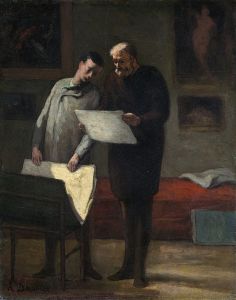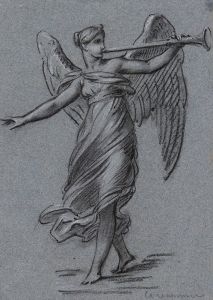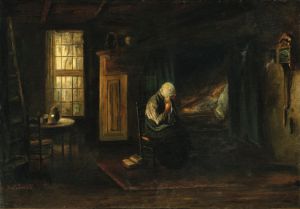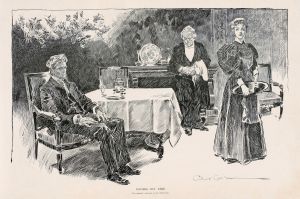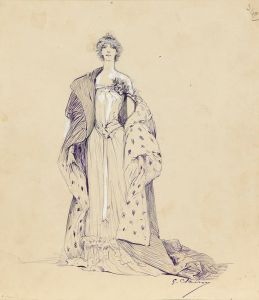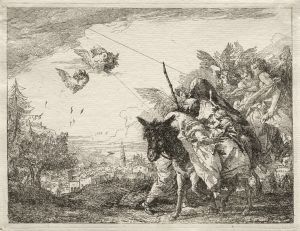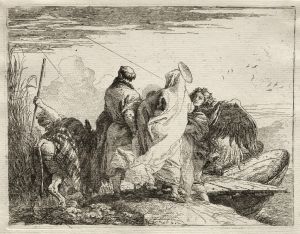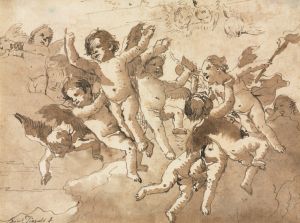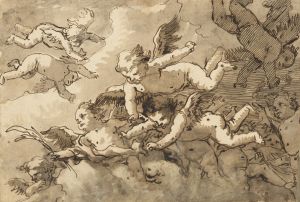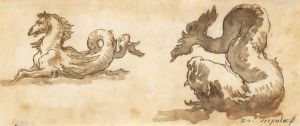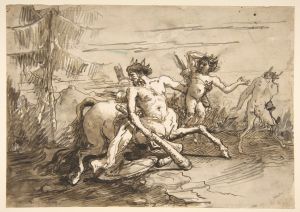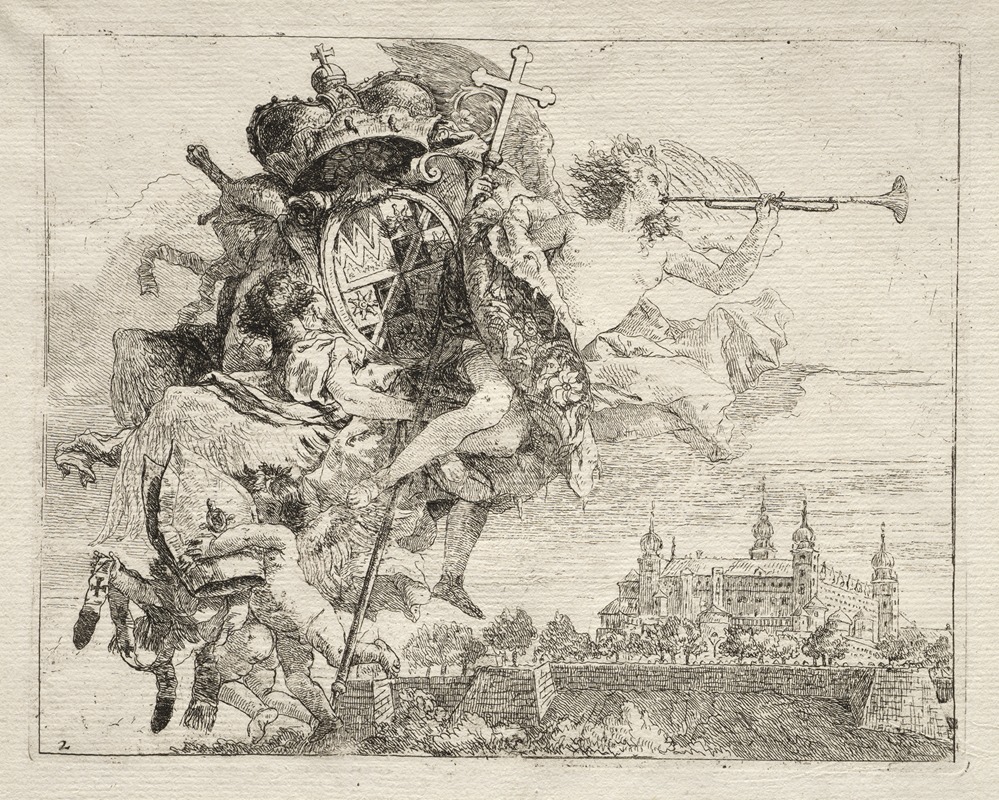
Dedication with Winged Figure of Fame bearing the Arms of the Prince-Bishop of Wurzburg
A hand-painted replica of Giovanni Domenico Tiepolo’s masterpiece Dedication with Winged Figure of Fame bearing the Arms of the Prince-Bishop of Wurzburg, meticulously crafted by professional artists to capture the true essence of the original. Each piece is created with museum-quality canvas and rare mineral pigments, carefully painted by experienced artists with delicate brushstrokes and rich, layered colors to perfectly recreate the texture of the original artwork. Unlike machine-printed reproductions, this hand-painted version brings the painting to life, infused with the artist’s emotions and skill in every stroke. Whether for personal collection or home decoration, it instantly elevates the artistic atmosphere of any space.
Giovanni Domenico Tiepolo, an Italian painter and printmaker, created the artwork "Dedication with Winged Figure of Fame bearing the Arms of the Prince-Bishop of Würzburg." This piece is a notable example of Tiepolo's skill in combining allegorical and heraldic elements, reflecting the grandeur and prestige of his patrons.
Giovanni Domenico Tiepolo was born in Venice in 1727, the son of the renowned painter Giovanni Battista Tiepolo. He trained under his father and worked alongside him on numerous projects, developing a style that, while influenced by his father's dramatic compositions and vibrant color palette, also exhibited his unique approach to narrative and detail.
"Dedicational with Winged Figure of Fame bearing the Arms of the Prince-Bishop of Würzburg" was created during a period when the Tiepolo family was engaged in significant commissions in Germany. In 1750, Giovanni Battista Tiepolo was invited to Würzburg by Prince-Bishop Karl Philipp von Greiffenklau to decorate the Residenz, the prince-bishop's palace. Giovanni Domenico accompanied his father and contributed to the extensive frescoes that adorned the ceilings and walls of this grand Baroque residence.
The artwork in question features the allegorical figure of Fame, depicted as a winged woman, a common motif in Baroque art symbolizing renown and glory. She is shown holding a shield bearing the coat of arms of the Prince-Bishop of Würzburg, a clear indication of the patronage and the intended honorific nature of the piece. The inclusion of the prince-bishop's arms signifies the work's purpose as a dedication, celebrating the power and influence of the prince-bishop.
Tiepolo's use of allegory and heraldry in this piece is characteristic of the period's artistic conventions, where such symbols were employed to convey messages of power, virtue, and divine favor. The dynamic composition, with Fame in motion and the detailed rendering of the coat of arms, showcases Tiepolo's ability to blend narrative and decorative elements seamlessly.
The frescoes and artworks created by the Tiepolo family in Würzburg are considered some of their most significant contributions to European art. Giovanni Domenico's work, including "Dedication with Winged Figure of Fame bearing the Arms of the Prince-Bishop of Würzburg," played a crucial role in the overall decorative scheme of the Residenz, enhancing the visual and symbolic impact of the prince-bishop's residence.
In summary, Giovanni Domenico Tiepolo's "Dedication with Winged Figure of Fame bearing the Arms of the Prince-Bishop of Würzburg" is a testament to his artistic prowess and the collaborative efforts of the Tiepolo family during their time in Germany. The artwork exemplifies the use of allegorical figures and heraldic symbols to convey messages of prestige and honor, reflecting the cultural and artistic values of the Baroque period.





